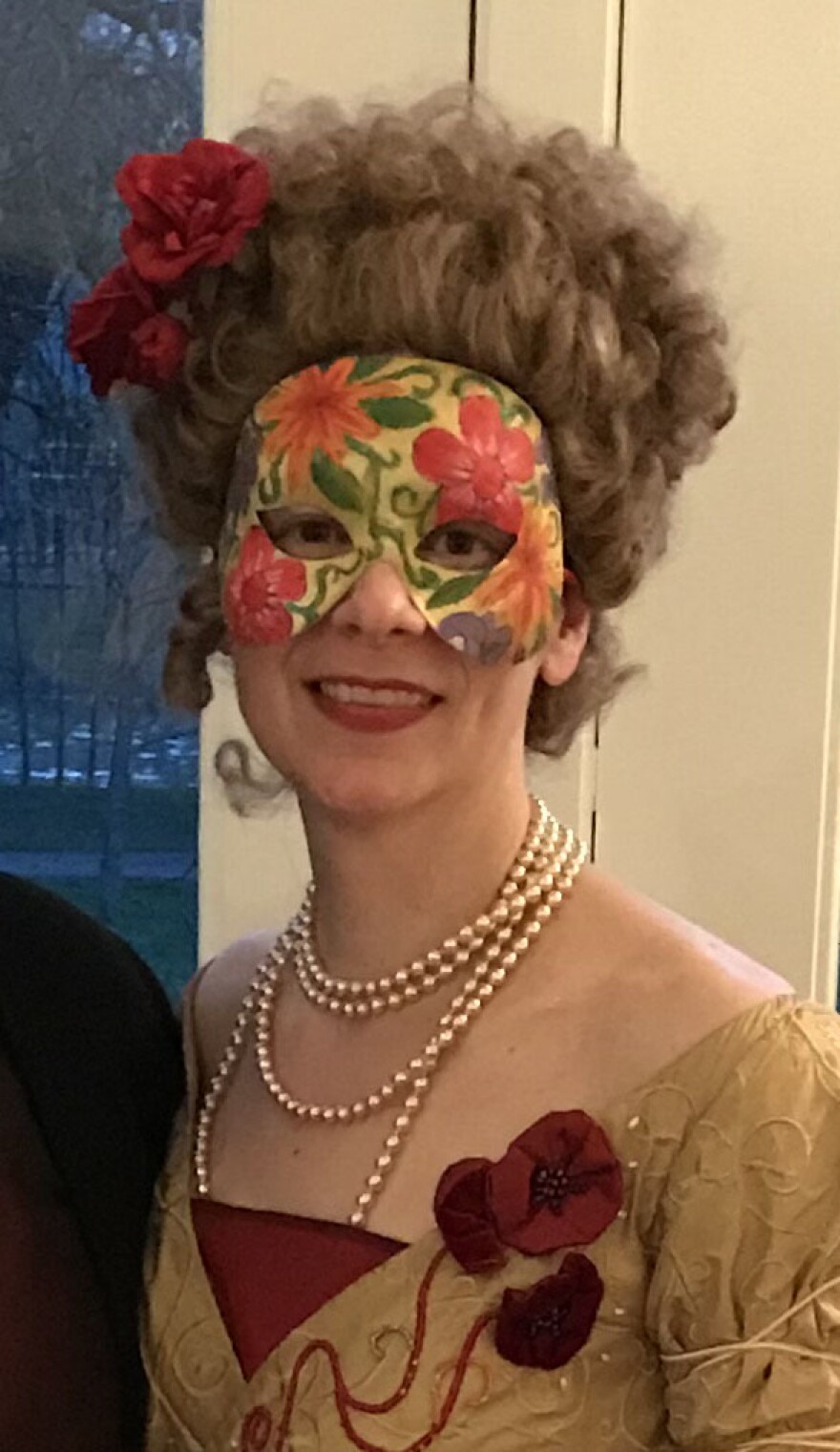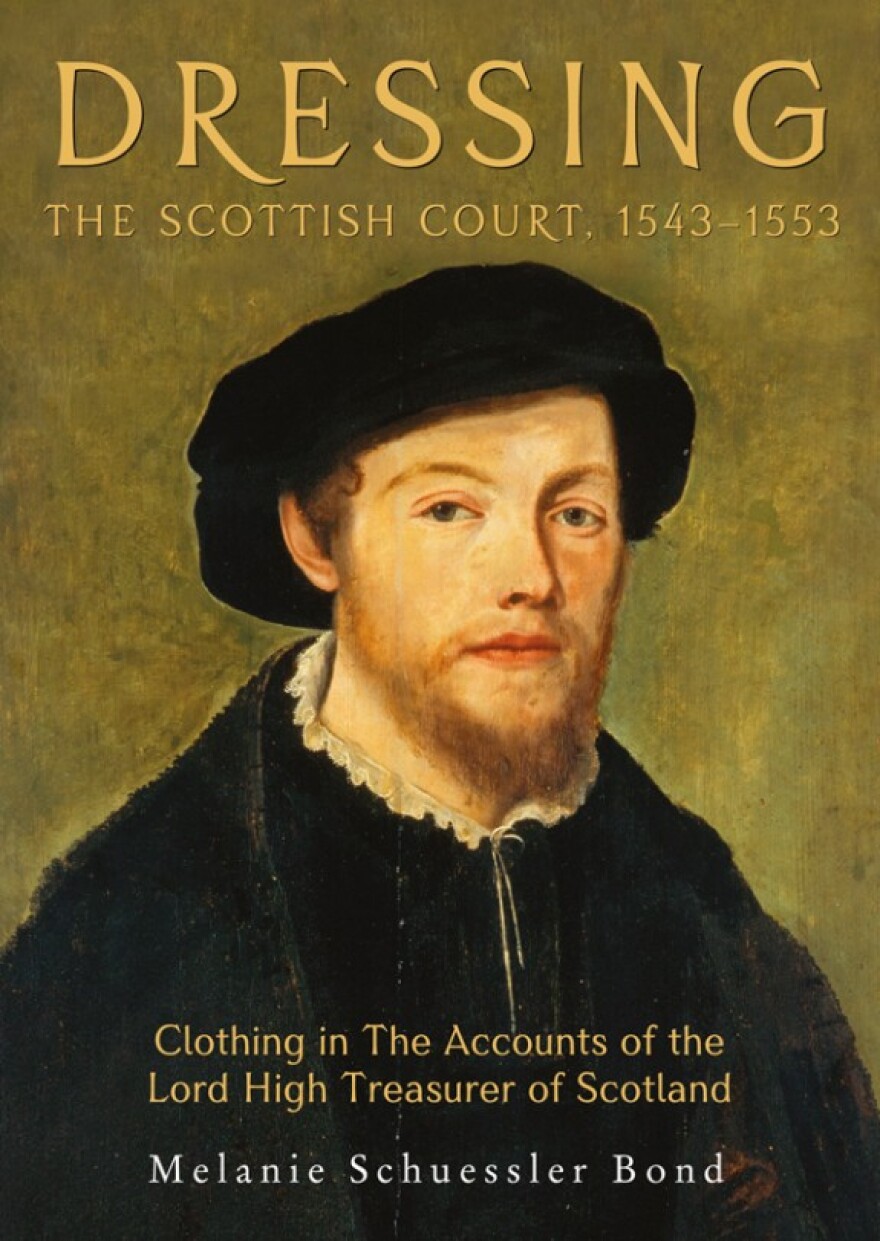Fashion is cyclical in nature--what is tacky now is retro later. But what about the fashions from long ago with the flouncy hats and pointed shoes you might see in a Shakespeare play? Melanie Schuessler Bond, EMU professor of costume design, knows. WEMU’s David Fair and The Arts Alliance’s Deb Polich talk with her to explore the craft of costume design and her recently published book "Dressing the Scottish Court, 1543-1553 Clothing in the Accounts of the Lord High Treasurer of Scotland" on "creative:impact" this week.

Creative industries in Washtenaw County add hundreds of millions of dollars to the local economy. In the weeks and months to come, 89.1 WEMU's David Fair and co-host Deb Polich, the President and CEO of The Arts Alliance, explore the myriad of contributors that make up the creative sector in Washtenaw County.

Melanie Schuessler Bond is the professor of Costume Design at Eastern Michigan University. In addition to designing costumes for dozens of university and professional shows, she researches sixteenth-century clothing of England and Scotland. She has also published articles on related topics in Medieval Clothing and Textiles and other venues. Her book Dressing the Scottish Court, 1543-1553: Clothing in the Accounts of the Lord High Treasurer of Scotland has just been published.
Though her passion extends to all periods of fashion history, her research focuses on the clothing of 16th-century England and Scotland. Recent presentations include “Deconstructing and Reconstructing Sixteenth-Century Clothing in Film” and “Cloak and Dagger: Treason and Clothing in Tudor England” at the International Medieval Congress.
Recent publications include “Costume Design for the Stage in the United States” in Documenting: Costume Design, “Fashioning the Middle Ages: Teaching Medieval Culture Through Clothing,” in the online journal The Once and Future Classroom, “French Hoods: Development of a Sixteenth-Century Court Fashion” in Medieval Clothing and Textiles, volume 5 and “’She Hath Over Grown All that Ever She Hath’: Children's Clothing in the Lisle Letters, 1553-40” in Medieval Clothing and Textiles, volume 3.
Professional design credits include The Rivals, Pygmalion, Twelfth Night, and Tartuffe for Michigan Shakespeare Festival; Art of Murder, Five Course Love, Flyover, U.S.A., Talley’s Folly, and Flap for Williamston Theatre, Williamston, MI; Southern Comforts for Tipping Point Theatre, Northville, MI; One Flea Spare for Planet Ant Theatre, Hamtramck, MI; Lucia di Lammermoor, Lady, Be Good, and Ain't Misbehavin' for Skylight Opera Theatre, Milwaukee, WI; The Caretaker, Steam Bath, and Twelfth Night for Bialystock and Bloom, Milwaukee, WI; and Macbeth for the Milwaukee Shakespeare Company.
On the technical side of costuming, she has worked as a professional Cutter/Draper for dozens of shows at companies including Skylight Opera Theatre, Pine Mountain Music Festival, Next Act Theatre and Madison Repertory Theatre.
Her portfolio appears online here.

Analysis of accounts disbursed by the royal treasury, alongside text and translation in excerpt, provides richly detailed information on clothing at the time.
The Accounts of the Lord High Treasurer of Scotland document money spent by the royal treasury and contain numerous references to clothing and textiles. This volume is designed to make the rich material in the Accounts from the regency of the Earl of Arran (whose ward was Mary Queen of Scots) available to those interested in the study of dress and accessories. In addition to overviews of the various types of garments mentioned in the Accounts and discussion of a number of specialty categories, such as wedding and funeral clothing, this book includes the original text of every entry from the Accounts pertaining to secular clothing, with facing translation into modern English.
The Accounts' entries include information on materials and labour, and describe thousands of items for dozens of people, from court fools to nobles. They are grouped here by recipient, in "wardrobe biographies" which gather all of the entries for a particular person together in chronological order. Through the numerous clothing-related entries from this period it is possible to track the wardrobes of a number of people connected to the Scottish court, the popularity of various garments and accessories, details about their construction, and insights into the relationships of the people involved.
Facebook Posting
Congratulations to #emutheatre professor Melanie Schuessler Bond on the publication of her new book, Dressing the Scottish Court, 1543-1553, Clothing in the Accounts of the Lord High Treasurer of Scotland! For information on her experience and the book itself, read her comments below. We are so happy for you, Melanie!
"This book came about because a number of royal treasury accounts exist from sixteenth-century Scotland that include information about clothing, but they are not available to the average person. Not only that, the clothing-related items are scattered throughout in the midst of payments for messengers, cannon repair, food for horses, and many other items. My goal was to make the information accessible to clothing historians and organize it in a useful way." In order to make that happen, I had to learn to read the dialect of sixteenth-century Scotland and even the handwriting, which is very different from what we use today. Here's an example--the first line is a transcription from the manuscript, and the second line is a translation into modern English:
Item deliuerit to hir tobe maid in garnessing and chenȝeis x vnce of gold price of þe vnce x li Summa—jc li
(Item, delivered to her, to be made into garnishing and chains 10 ounces of gold, price of each ounce £10; total: £100.)
Little stories that humanize the past develop from clues in the accounts. In the example given above from 1552, £100 (an enormous amount) was spent for necklaces and gold decorations for a headdress. That amount was actually spent twice: the first entry was for Jane Herries on the occasion of her wedding, and a few months later a second identical sum and description appears for her sister Katherine, who presumably got jealous that she hadn't received as nice a gift for her own wedding a year earlier! It's fascinating to get insights into the lives of people who lived so long ago."
Non-commercial, fact based reporting is made possible by your financial support. Make your donation to WEMU today to keep your community NPR station thriving.
Like 89.1 WEMU on Facebook and follow us on Twitter
— David Fair is the WEMU News Director and host of Morning Edition on WEMU. You can contact David at 734.487.3363, on twitter @DavidFairWEMU, or email him at dfair@emich.edu







